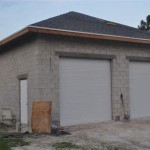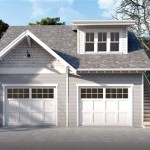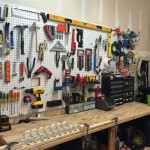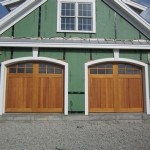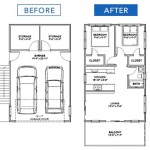Can I Put A Vented Dryer In A Garage? A Comprehensive Guide
The question of whether a vented dryer can be installed and safely operated in a garage is a common one for homeowners. Garages often present a convenient laundry location, offering space without disrupting the main living areas. However, the proper installation and ventilation of a vented dryer require careful consideration to ensure safety and efficiency. This article will delve into the various aspects of this question, exploring building codes, ventilation requirements, safety concerns, and practical alternatives.
Understanding the specifics of vented dryers is crucial before making any decisions about garage installation. Vented dryers function by expelling hot, moist air outside through a duct. This process helps to remove moisture from clothing, preventing mold growth and ensuring effective drying. Without proper ventilation, the humid air released by the dryer can lead to a number of problems, particularly within an enclosed space like a garage. This includes increased humidity levels, potential for mold and mildew growth, and even the accumulation of carbon monoxide if a gas dryer is used and not properly vented.
Building codes play a significant role in determining the permissibility of installing a vented dryer in a garage. These codes are designed to ensure the safety and well-being of residents and often vary depending on the local jurisdiction. It is imperative to consult local building codes and obtain any necessary permits before proceeding with the installation. These codes may specify requirements for ventilation, fire safety, and electrical or gas connections. Failure to comply with building codes can result in fines, required modifications, or even the inability to use the dryer.
Understanding Building Codes and Permits
The first step in determining whether a vented dryer can be placed in a garage is to thoroughly review local building codes. These codes will outline specific requirements for appliance installations, including ventilation, electrical or gas connections, and fire safety. Local building departments are responsible for enforcing these codes and can provide clarification on any ambiguous points. Contacting the local building department is a proactive approach to ensure compliance and avoid potential issues down the line.
Building codes often specify minimum clearance requirements around appliances, ensuring adequate space for maintenance and preventing fire hazards. They may also dictate the type of venting material that can be used and the maximum length of the vent run. These details are crucial for planning the installation and ensuring that it meets all safety standards. A permit may be required for the installation, particularly if it involves gas or electrical work. The permit process typically involves submitting plans for review and undergoing inspections to verify compliance with the building codes.
Failure to obtain the necessary permits or adhere to building codes can have significant consequences. In addition to potential fines and legal repercussions, non-compliant installations can pose safety risks to the occupants of the building. For instance, improper ventilation can lead to carbon monoxide buildup from a gas dryer, while inadequate electrical connections can create fire hazards. Therefore, understanding and adhering to local building codes is paramount for a safe and compliant installation.
Ventilation Requirements for Vented Dryers
Effective ventilation is the cornerstone of safely operating a vented dryer in any space, especially in a garage. The primary purpose of ventilation is to expel the hot, moist air produced during the drying process to the outside environment. Without adequate ventilation, this moisture can accumulate within the garage, leading to a range of problems including mold and mildew growth, which can damage structures and pose health risks. Additionally, the increased humidity can create an uncomfortable environment and potentially affect the performance of other items stored in the garage.
The ideal ventilation setup involves a rigid metal duct that extends directly from the dryer to an exterior wall. The duct should be as short and straight as possible to minimize airflow resistance and prevent lint buildup. Flexible ducts, while easier to install, are generally discouraged due to their propensity to trap lint and restrict airflow. Lint accumulation can significantly reduce the dryer's efficiency and increase the risk of fire. Regular cleaning of the vent duct is essential to maintain optimal airflow and prevent hazards.
In some cases, it may not be feasible to vent directly to an exterior wall. Alternative venting solutions, such as through the roof, may be considered, but these options often require professional installation to ensure proper sealing and prevent water leaks. Regardless of the chosen venting method, it is crucial to ensure that the vent terminates outside the building and is equipped with a backdraft damper to prevent outside air and pests from entering the duct. Inadequate ventilation can also lead to the dryer overheating, which can damage the appliance and potentially cause a fire.
Furthermore, consider that the ventilation system should be inspected regularly for damage, blockages, and disconnections. A well-maintained ventilation system is a vital component of safely and efficiently operating a vented dryer in a garage environment. If the installation is too difficult or complex for the homeowner, hiring a qualified HVAC technician is recommended.
Safety Considerations: Gas vs. Electric Dryers
The type of dryer, whether gas or electric, significantly influences the safety considerations associated with garage installation. Gas dryers pose a greater risk of carbon monoxide poisoning if not properly vented, while electric dryers primarily present electrical hazards if not correctly installed. Understanding these distinct risks is crucial for ensuring a safe and compliant installation.
Gas dryers use natural gas or propane to generate heat, producing carbon monoxide as a byproduct of combustion. Carbon monoxide is a colorless, odorless, and highly toxic gas that can be fatal if inhaled in sufficient quantities. Proper ventilation is essential to expel this gas safely outside the building. Carbon monoxide detectors should be installed in the garage and adjacent living areas to provide early warning of any leaks. Regular maintenance of the gas line and dryer components is also important to prevent leaks.
Electric dryers, on the other hand, do not produce carbon monoxide, but they require a dedicated 240-volt electrical circuit. Improper wiring or overloaded circuits can create a fire hazard. It is essential to ensure that the electrical circuit is properly grounded and that the dryer is connected to a dedicated outlet. Using extension cords or adapters is strongly discouraged, as they can overload the circuit and increase the risk of fire. A qualified electrician should be consulted for any electrical work to ensure compliance with local codes and safety standards.
In addition to the specific hazards associated with gas and electric dryers, general safety precautions should be observed. Keep the area around the dryer clear of flammable materials, such as paper, cardboard, and cleaning supplies. Clean the lint trap after each use to prevent lint buildup, which can reduce dryer efficiency and increase the risk of fire. Regularly inspect the dryer and ventilation system for any signs of damage or wear and tear. Addressing these safety concerns proactively can significantly reduce the risk of accidents and ensure the safe operation of the dryer.
The use of a professional installation service is highly recommended, especially for gas dryers. They can ensure that all safety precautions and building code requirements are met. This can provide peace of mind and a safer operating environment.
Beyond the safety of human occupants, consideration must be given to the garage itself. Garages are often used for storage of items that could be damaged by humidity. The constant influx of moist air from an improperly vented dryer can corrode tools, damage cardboard boxes, and promote rust on metal surfaces. This can result in significant long-term costs associated with replacing damaged goods.
Another factor to consider is the garage door. Garages are not generally designed to be airtight environments. Gaps around the garage door can allow moist air to escape, potentially mitigating the negative effects of an improperly vented dryer. However, relying on this unintentional ventilation is not a substitute for a proper ventilation system and may not be sufficient to prevent moisture buildup.
Furthermore, the impact on indoor air quality should not be overlooked. Even with some degree of ventilation, moist air from the dryer can seep into the rest of the home, contributing to overall humidity levels. This can be particularly problematic in climates that are already humid, potentially exacerbating issues with mold, mildew, and respiratory health.
Finally, while placing a dryer in a garage may seem like a convenient solution, it is essential to weigh the costs and benefits carefully. Proper installation, ventilation, and regular maintenance are crucial for ensuring safety and preventing long-term problems. Consulting with professionals and adhering to local building codes are essential steps in making an informed decision.

Is It Safe To Install A Tumble Dryer In Garage Or Shed

Is It Safe To Install A Tumble Dryer In Garage Or Shed

Is It Safe To Install A Tumble Dryer In Garage Or Shed

Can You Vent A Dryer Into Garage

Is It Safe To Install A Tumble Dryer In Garage Or Shed

Is It Safe To Install A Tumble Dryer In Garage Or Shed

Can I Use A Tumble Dryer In Garage Diamond Home Support

Dryer Vented Into Garage Inspecting Hvac Systems Internachi Forum

Venting A Clothes Dryer Into Garage Doityourself Com Community Forums

Can You Vent A Dryer Into The Garage
Related Posts


